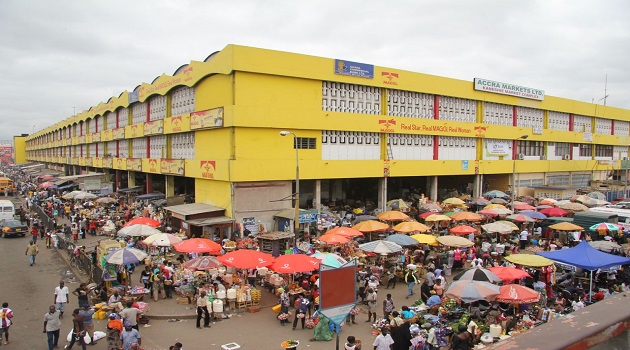
Recognizing that the Fisheries sub-sector of the economy of Ghana has not effectively played its role in national development efforts and, more particularly, in view of the threat of collapse of the sub-sector, due to dwindling fish stocks, the Government of Ghana enacted the Fisheries Law (Act 625) in 2002 and promulgated the Fisheries Regulations (Legislative Instrument 1968) in 2010 to give effect to the Law?in an effort to address the challenges and reverse the situation.
The European Union (EU) is also assisting Ghana to achieve sustainable fisheries management through the implementation of the EU Regulation on Illegal, Unregulated and Unreported (IUU), strengthening capacity in fisheries governance and the effective monitoring, control and surveillance of the fisheries sector.
Under the project dubbed, Ensuring Greater Environmental Sustainability and Social Equity in Ghana's Fishery Sector, the EU is providing a total of 1.9 million Euros as a grant to support efforts to reduce illegal fishing activities and promote participatory co-management of fisheries, promote food security and improve livelihoods in the sector.
The Environmental Justice Foundation (EJF), a UK based non-profit organization working to protect the environment and defend human rights, is partnering Hen Mpoano, a non-profit organization based in Ghana, to implement the three-year project.
Under the project, volunteers in pilot communities-cluster within the Greater Accra Region are being trained and equipped to undertake education and sensitization of their community members on the fisheries laws, report and assist in the prosecution of fisheries infractions, conduct lake and land patrols and also to undertake the registration of canoes.
What does Ghana's Fisheries Act, 2002 (Act 625), which consolidated Provisional National Defence Council Law (PNDCL 256) of 1991, with amendments, say? one may ask.
The Act provides for the regulation and management of fisheries; development of the fishing industry; and the sustainable exploitation of the fishing industry.
It makes provision for the establishment of the Fisheries Commission and defines its powers and functions, and the organization structure, provides for the establishment of a Fisheries Development Fund and its use, and regulates the management and conservation of fishery resources of Ghana including aquaculture and small-scale fishing.
The Law, which is divided into 6 parts and 141 sections, may be classified under 3 broad areas, namely: Conservation of the resources; Safety of the operators and Enforcement of the Law.
It covers a Licensing regime for canoes and qualification for licenses (Section 27); Establishment of zones and prohibition of fishing inside the zones (Section 81); Destruction of fishing gears of artisanal fishermen within the Inshore Exclusive Zone (IEZ) (Section 82); Closed seasons (Section 84); Submerged stationery fishing gear (Section 86); Prohibited fishing methods (Section 88); Protection of gravid and juvenile lobsters, crustacean and juvenile fish (Section 89); Fishing for marine mammals (Section 90, R17); Fisheries Impact Assessments (Section 93); Establishment and functions of the Monitoring, Control and Surveillance, and Enforcement Unit (Section 94); Authorized Officers (Section 95); Policing and other powers of Authorized Officers (Section 96); and the Possession of prohibited fishing gear (Section 135).
Under the law, it is not allowed to use a canoe for fishing in the fishery waters unless a license has been issued for the canoe for the purpose of fishing and it is an offence for a person aboard a motor fishing vessel to destroy or damage any appropriately marked fishing gear of an artisanal fisherman inside the IEZ which is the water area specified in the schedule to the Fisheries Act.
The Law provides that the Fisheries Commission may declare closed seasons, including their duration, for fishing in specified areas of the coastal waters or the riverine system and that every submerged stationary fishing gear or surface drifting gear should bear conspicuous surface marks using brightly-coloured buoys, flags or floating poles and night lighted markers, all of which should be visible in clear weather at a distance of about at least one nautical mile, except that in the case of nets, the markers should be placed at intervals of 25 metres along the full length of the net.
Under the Law, it is an offence to use any explosive, poison, or other noxious substance for the purpose of killing, stunning, disabling or catching fish or, in any way, rendering fish more easily caught.
The Law also makes it an offence to knowingly take any gravid lobsters, crustacean or any juvenile fish during fishing and that prior written approval from the Fisheries Commission is required for fishing for marine or freshwater mammals in the fishery waters of the country
The Law provides that the Fisheries Commission should be informed, by any person or government department or other agency planning to conduct any activity other than fishing, which is likely to have a substantial impact on the fishery resources or other aquatic resources of Ghana, of the plans prior to the commencement of the planned activity with a view to the conservation and protection of the resources.
The Law establishes a Monitoring, Control, Surveillance and Enforcement Unit which is responsible for monitoring, control and surveillance of all fishing operations within the fishery waters of Ghana.
Under the Law, the Fisheries Minister is allowed to appoint, in writing, any public officer as an authorized officer for the purposes of the Fisheries Act and the person is required to exercise all powers and functions provided by or under the Fisheries Act.
According to the Law, for the purposes of enforcing the Fisheries Act, an authorized officer has the same powers of arrest as a police officer.
The Law prohibits the possession or control a fishing gear that is prohibited for use in the fishery waters, unless the gear is located at least two kilometers inland from a shoreline.
The writer is a freelance journalist and a lawyer.
Hits: 10
Read Full Story




















Facebook
Twitter
Pinterest
Instagram
Google+
YouTube
LinkedIn
RSS